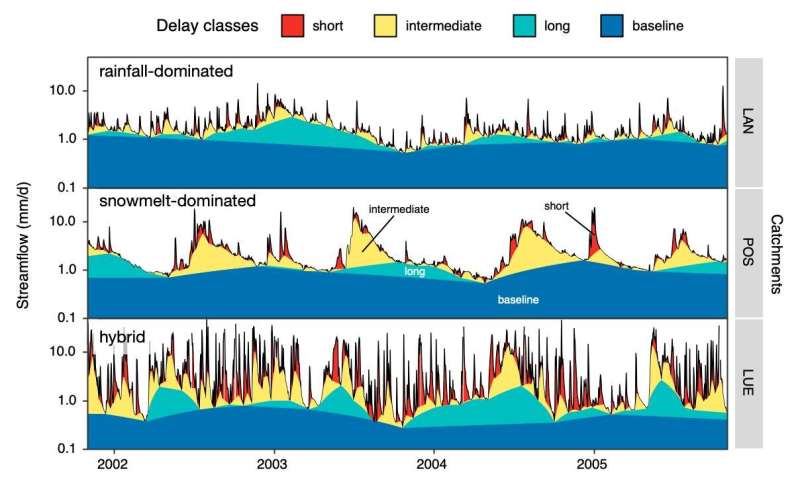New method to determine how resistant rivers are to drought

Heat, dry conditions, and the resulting low flows in rivers and lakes characterized the summer months of 2003, 2015 and 2018 in Europe. Another low-flow period is on the cards for the summer of 2020. Researchers from the University of Freiburg, working with the Universities of Trier and Oslo, Norway, have presented a new method which can help scientists tell more precisely how vulnerable rivers are to drought conditions. Their findings are published in the journal Hydrology and Earth System Sciences.
"We are seeing that different rivers react very differently to a lack of precipitation," says the author of the study, Dr. Michael Stölzle from Environmental Hydrosystems at the University of Freiburg. The heart of the newly-developed method is a filter algorithm that divides the streamflow into faster and slower components. If a catchment is dominated by fast components and surface runoff, the catchment is often less able to store water and is therefore more dependent on regular rain—and is thus less resistant to droughts. If, on the other hand, most of the runoff components are slower—such as those from snowmelt or large groundwater reservoirs, the rivers will have longer stable streamflow even during prolonged dry periods. With the help of the filter, researchers can also determine after how many days a faster runoff component stops contributing significantly to a rivers's total streamflow.
"Filtering the streamflow signal is not a new idea," says Stölzle, "but it was often separated only into a fast and a slower component." In this study, the hydrologists refined the existing filters to identify three or four streamflow components with different delays. This showed that alpine regions, for example, not only have snowmelt in summer as dominant component, but also have very stable runoff conditions in winter. "From this we conclude that even in steep alpine regions there may be important subsurface storages which may ensure continuous runoff downstream," says Stölzle.
The study used streamflow data from areas in Baden-Württemberg and Switzerland. Since only streamflow data are required for the new method, it can in principle be applied worldwide and can also be used in water management. The researchers suggest applying the method to other variables such as groundwater levels or using it to separate glacier and snowmelt components.
"In Baden-Württemberg, this method may in future help us to better understand how sensitive a catchment is to drought," Stölzle explains. "A current survey among the lower water authorities has shown that both the irrigation demand and applications for water use will most likely increase in the future."
More information: Michael Stoelzle et al. Beyond binary baseflow separation: a delayed-flow index for multiple streamflow contributions, Hydrology and Earth System Sciences (2020). DOI: 10.5194/hess-24-849-2020
Provided by Albert Ludwigs University of Freiburg



















